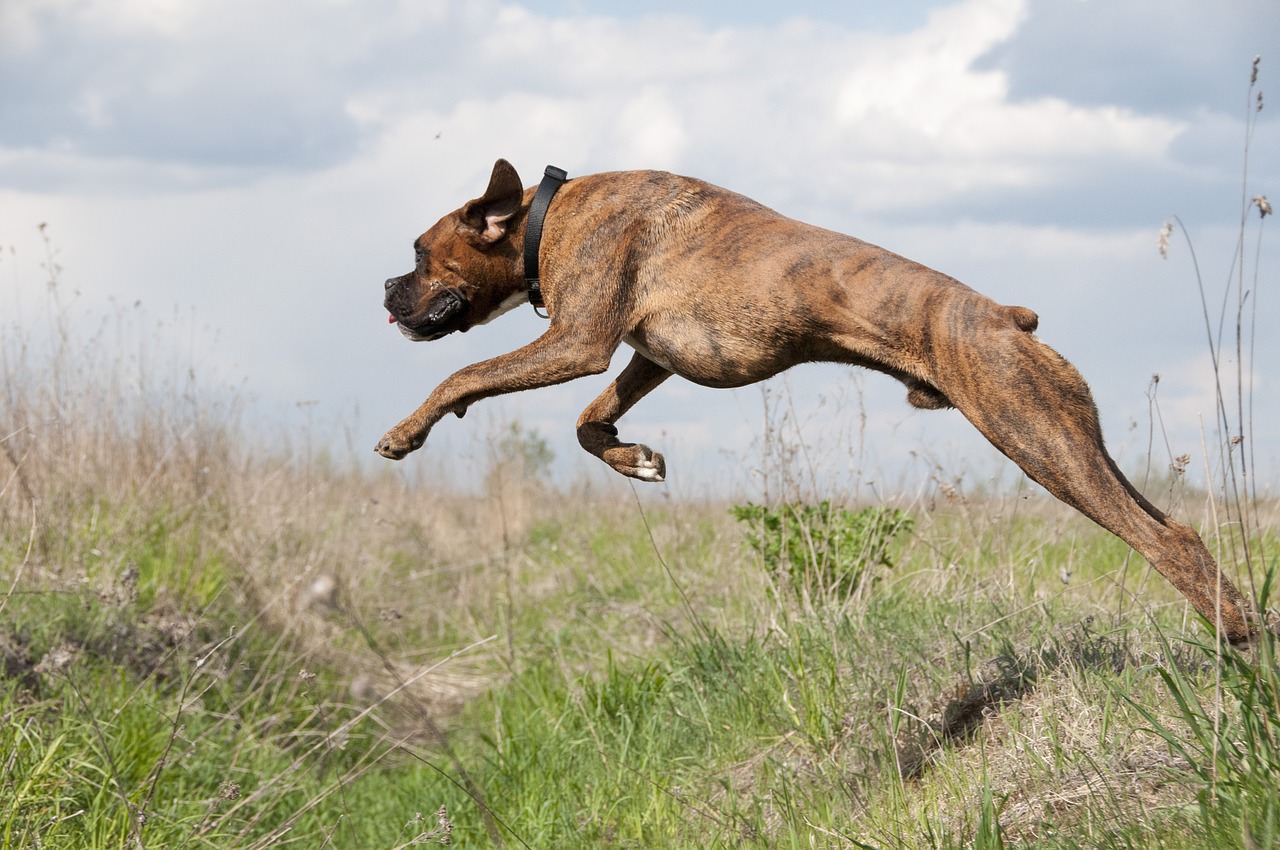Anyone who has been around a dog knows that dogs communicate with their tails. Low wagging tails indicate submission. Relaxed waving tails can indicate relaxation and happiness. A stiff and high, slowly waving tail can indicate alertness or aggression. A friendly, wagging tail makes us smile and improves our bond with our dogs. Communication is an obvious function of your dog’s tail.
But dogs may depend on their tails as part of their locomotion as well, just like scientists think some dinosaurs did². When dogs run fast and change direction suddenly, they appear to use their tails as a counterbalance. The weight and shape of the tail can help offset sudden weight shifts and maintain the center of balance.

Dogs that have had their tails docked show a slightly different body conformation when they are jumping over obstacles than those with full tails. This indicates that the counterbalance of a full tail is something that a dog takes advantage of where possible. Observe the boxers that are jumping in the photos. The one with a full length tail appears more relaxed and extended, while the one with the docked tail appears to be more hunched and less relaxed. He appears to need to lower his head more to offset the weight balance.

Dogs with their tails docked can obviously have happy lives, but observing dogs without and with tails indicates that tails serve a good purpose in addition to just showing us how our dog feels about things.
Because dogs are so tuned in to body language, they tell a story with every gesture and every movement. Just watching our dogs can teach us so much about them, if we pay attention.
- S.M. O’Connor, T.J. Dawson, R. Kram, and J.M. Donelan. The Kangaroo’s tail propels and powers pentapedal locomotion. Biology Letters. 10(7) 20140381, 2014.
- W. Scott Persons, Philip J. Currie. The Tail of Tyrannosaurus: Reassessing the Size and Locomotive Importance of the M. caudofemoralis in Non-Avian Theropods. The Anatomical Record: Advances in Integrative Anatomy and Evolutionary Biology, 2010; DOI: 10.1002/ar.21290
